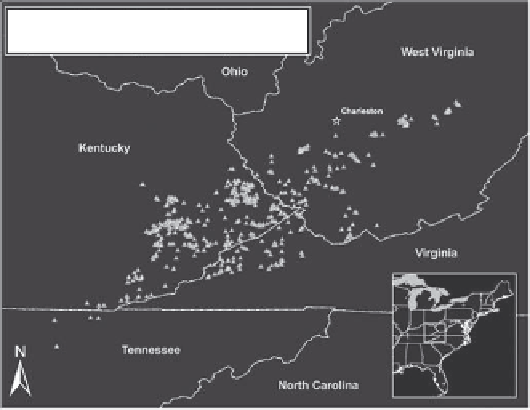Environmental Engineering Reference
In-Depth Information
Appalachian mountains destroyed
by mountaintop removal, ca 2005
Figure 6.7
Locations of Appalachian mountains destroyed by mountaintop removal, 2005. (http://
ilovemountains.org/resources)
Current federal law does not classify the rock waste dumped in the
stream bed as a pollutant under the Clean Water Act. A court decision
in 2009 gave the green light to many dozens of mountaintop mining
projects that could destroy more than 200 miles of valleys and streams
on top of the 1,200 miles that have already been obliterated. The federal
government has always caved in to pressure from the coal mining indus-
try and from the late Robert Byrd, West Virginia's senior senator.
Getting remedial legislation through Congress is not the only problem
facing those who want mountaintop mining stopped, as Maria Gunnoe
in West Virginia found out.
28
Her property has fl ooded seven times in
the past nine years. In 2004 a spring rain turned a small creek in her
back yard into a raging torrent 60 feet wide and 20 feet high. She blames
the 1,200-acre mountaintop removal mine that has been leveling the
ridge above her home.
29
In 2007 the coalition she founded sued the Army Corps of Engineers
to stop new mining at a mountaintop site near her home. Gunnoe gath-
ered twenty local residents to join her in testifying against the site. But
more than 60 miners showed up at the community hall to harass them;
Gunnoe was the only resident willing to speak up.
The federal court ruled in her favor. Soon after, the mining company
announced potential job losses at the site, and Gunnoe found her pho-

